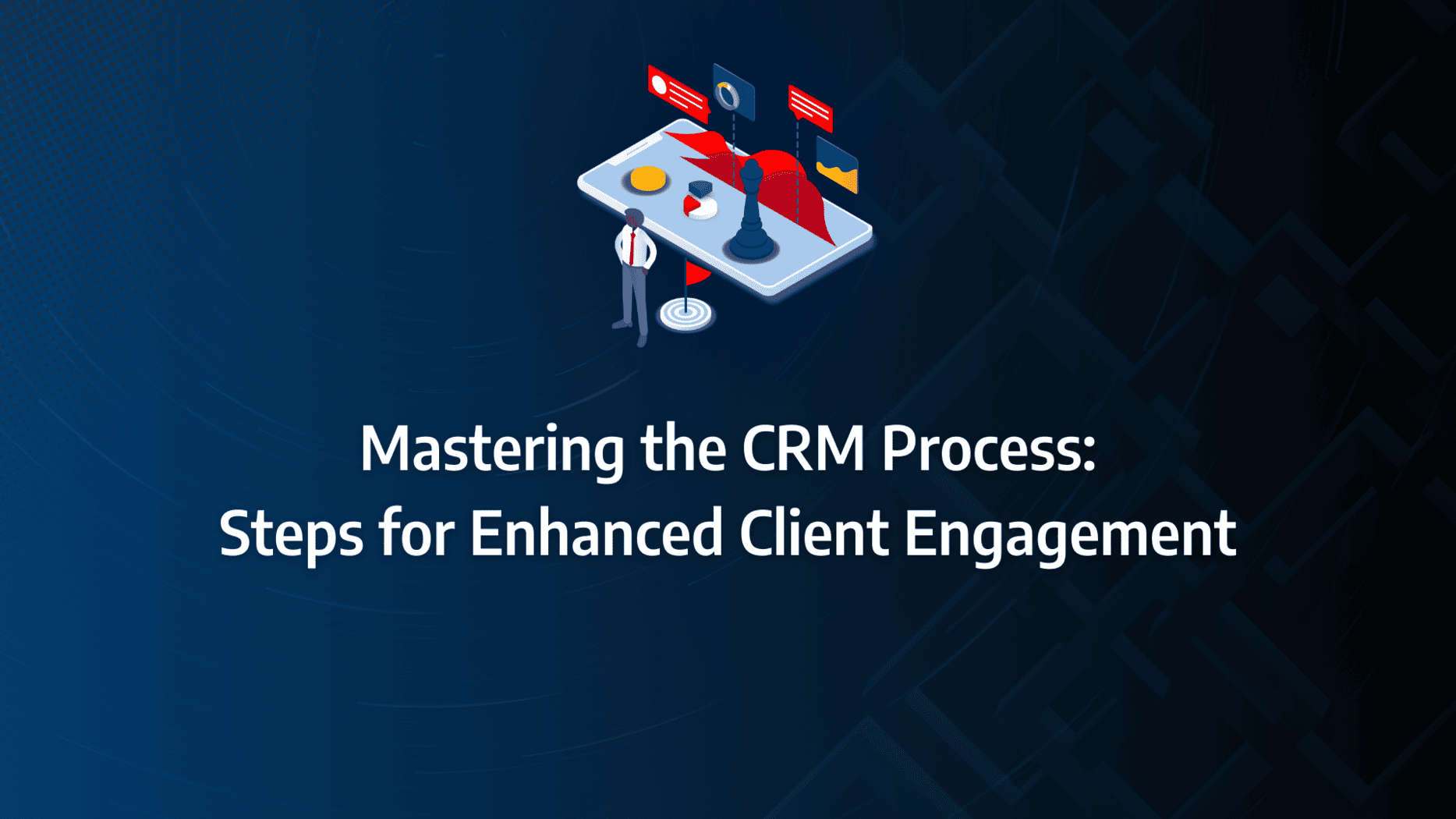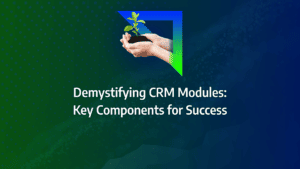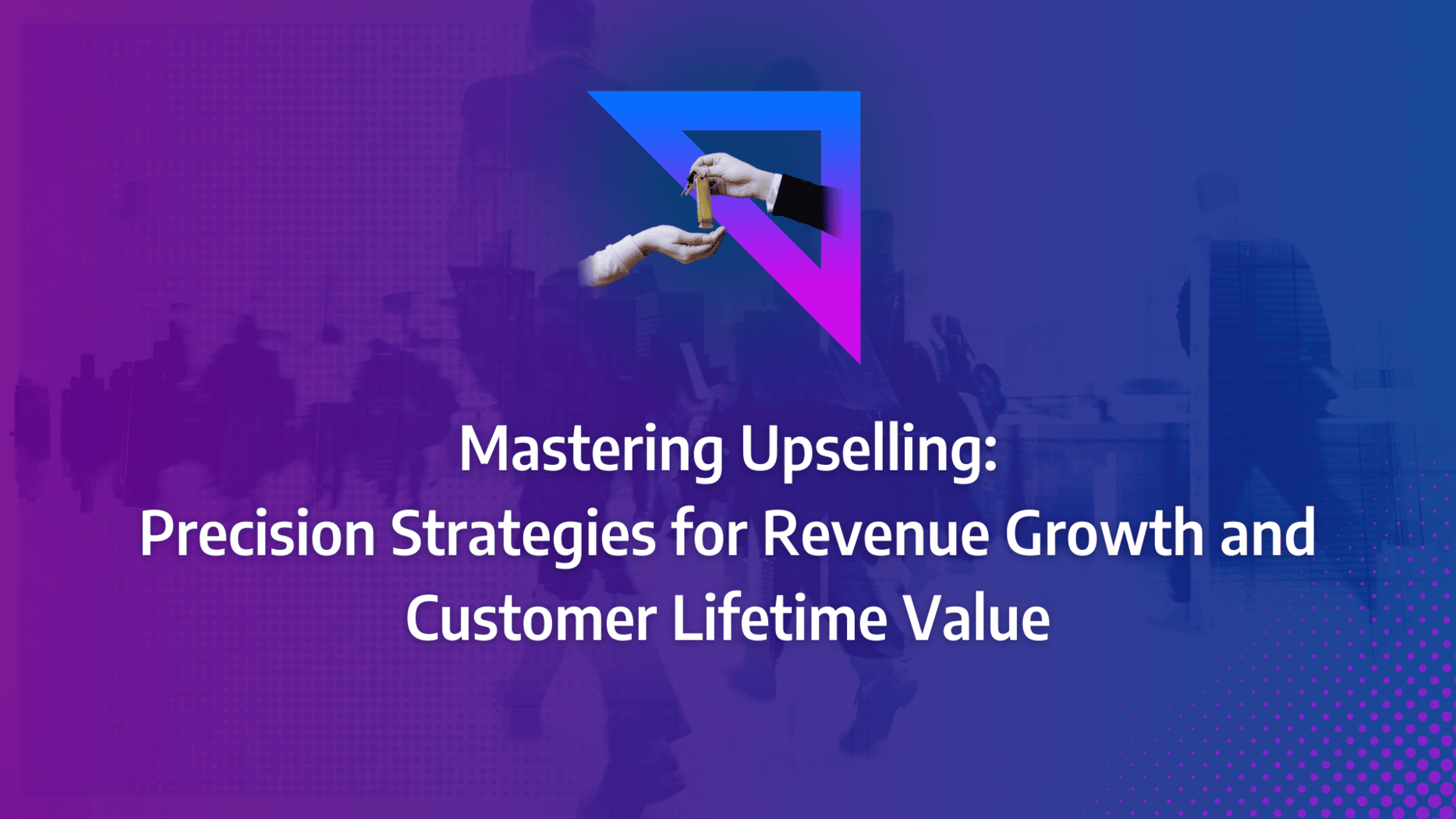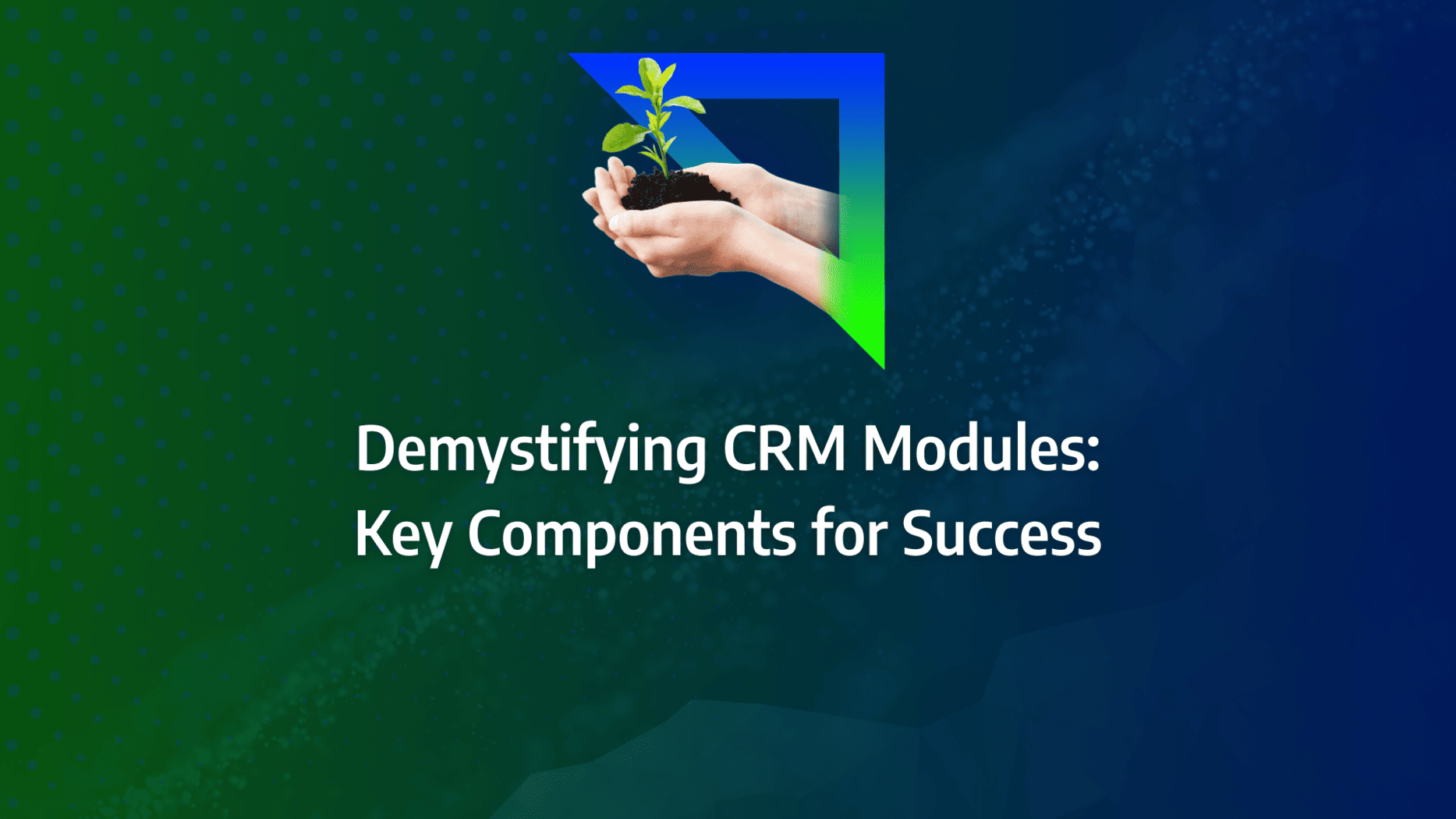Customer relationships are the lifeblood of any business, yet too many companies struggle with disjointed processes that leave clients feeling neglected. Imagine losing a loyal customer simply because vital information was lost in the shuffle. It’s a scenario no business can afford. But what if you could transform your customer interactions, ensuring every touchpoint is seamless and impactful?
By mastering the CRM process, you can do just that. This guide will walk you through the essential steps to streamline your CRM approach, helping you turn every client interaction into a step toward stronger, more profitable relationships.
- A well-structured CRM process is essential for managing customer relationships effectively, ensuring consistency and satisfaction at every touchpoint.
- Implementing CRM software can automate and optimise key steps like lead management and sales pipeline tracking, improving overall efficiency.
- Regularly updating CRM data and integrating it with other business tools are best practices that keep the process running smoothly.
- Overcoming challenges like data silos and resistance to change requires cross-departmental collaboration and user-friendly CRM interfaces.
What are the Types of CRM Systems?
In today’s customer-centric business environment, customers undeniably hold the power. They dictate the demands in product and service markets, necessitating businesses to stay attuned to customer needs and preferences. Recognising this, over 47% of business owners plan to increase their budgets for customer service enhancements.
CRM systems remain the most effective solution for addressing customer priorities. These systems, while sharing a common goal of helping businesses manage customer relationships, vary significantly in their technological approaches. Here, we will explore four distinct types of CRMs, outlining their features, benefits, users, and providing relevant examples to illustrate their applications.
What Matters Most?
CRM processes that align directly with the customer journey typically yield the most significant long-term impact. Integrating customer expectations and perceptions into CRM strategy—not just behaviours—creates a more holistic understanding of each account. Another key insight is leveraging CRM as a proactive tool, not just for managing current interactions but for anticipating future needs through predictive analytics.Get In Touch
Analytical CRMs
According to FitSmallBusiness.com, 56% of organisations streamline their beliefs and targets by using CRM techniques to access consumer data. By focusing on specific elements, both sales and marketing efforts can become more effective.
An analytical CRM system is dedicated to gathering customer data and analysing it for patterns and trends. Its modus operandi involves capturing, interpreting, segmenting, storing, modifying, processing, and publishing all relevant data from customers. This includes contact information, feedback, and any other pertinent details that help identify patterns or preferences.
Identifying these patterns enables companies to better understand the impact of their products or services on customers. This insight allows departments such as customer care and sales to become more customer-oriented. Coupled with in-depth data analytics, these advantages help companies remain attuned to market needs and preferences.
Features
- Central Data Pooling: Analytical CRM systems pool all customer information into a central database, collating details from all parts of the enterprise. Every team, department, or office that interacts with customers can leverage these systems to deposit analytical data into a primary storage area.
- Customer Segmentation and Prioritisation: Analytical CRMs provide insights into market landscapes, revealing customer characteristics that can be used to segment and prioritise groups. This allows businesses to tailor products and services to fit each segment. For instance, businesses can generate new indices from data analytics, such as segment numbers or labels for use in other models or predictive variables. This derived data helps identify the best customer groups for new products, create new marketing campaigns, and optimise sales channel mixes. The overall gain is focusing on customer behaviour and future profitability, enabling investment in the most profitable customers.
- OLAP Tools: OLAP, or Online Analytical Processing, is crucial for unearthing data. Its capabilities include extensive reporting, complex statistical analyses, and hypothetical scenario planning. These tools form the core of business analytics, allowing you to peel back layers of information to access essential data. In essence, OLAP tools enable you to see the big picture, isolating valuable data from less critical information to inform actionable decisions.
Benefits
The primary role of analytical CRM in an organisation is to enhance decision-making for both ongoing and future campaigns. Key benefits include:
-
Making advertising strategies more effective.
-
Targeting opportunities and potential customers with the best content.
-
Boosting customer retention rates.
-
Strengthening customer loyalty.
-
Understanding optimal times and clients for selling or upselling.
-
Increasing sales by analysing what sells and what does not.
-
Identifying and addressing company or staff weaknesses.
-
Carefully building robust customer connections.
Users
Analytical CRM is versatile and not limited to niche applications. It is particularly suitable for:
-
Organisations that utilise big data to understand customer needs.
-
Businesses aiming to build a customer-oriented marketing strategy.
-
Companies seeking to save time and money by leveraging data-driven insights.
Examples
Prominent examples of analytical CRM systems include Insightly and Zoho Analytics. These platforms exemplify successful CRM examples by offering robust tools for data analysis and customer relationship management.
By implementing these CRM strategies, businesses can enhance their operational efficiency and customer satisfaction, making them indispensable in today’s data-driven market environment.
Collaborative CRM
Collaborative CRM systems are designed to facilitate the exchange of client data across various groups within an organisation. Unlike other CRM types that primarily focus on marketing and sales, collaborative CRMs emphasise enhancing customer service.
According to a recent Salesforce study, 91% of CEOs believe that misalignment within teams directly impacts project turnover. Collaborative CRMs address this issue by significantly improving information flow among departments such as marketing and sales, while also supporting the staff within these departments. They are particularly useful for teams that operate independently or face challenges in addressing customer concerns. The primary aim is to truly accommodate clients, even if it means granting departments access to sensitive information.
Features
-
Interaction Management: This feature helps record all essential parts of the customer journey timeline. By maintaining this timeline, businesses can always access it to make improvements or reward customer loyalty. It also enables the segmentation of contacts according to various markers and criteria.
-
Channel Management: This feature offers customers a variety of communication channels to choose from, including texts, calls, emails, live chats, and social media platforms. It is crucial to ensure active and responsive engagement on any channel the customer chooses.
-
Additional Features: Collaborative CRMs often include video conferencing applications and integration with productivity apps like Google Drive, Slack, and Dropbox.
Benefits
The primary role of collaborative CRMs is to share collected customer information with all teams within an organisation. However, their benefits extend beyond this:
-
Aligning similar goals across multiple teams.
-
Comprehensive handling of the entire customer experience.
-
Providing consistent service to customers across every channel.
-
Offering access to interconnected data that presents a holistic view of the customer.
Users
Collaborative CRMs are suitable for:
-
Decentralised companies organised into separate units managing the same client base.
-
Large organisations with a substantial client base.
-
Small-sized brands seeking more intimate collaboration across all departments.
-
Businesses comfortable with allowing all teams access to customer information.
Examples
Successful CRM examples of collaborative CRMs include Creatio, Bitrix24, and Copper. These platforms demonstrate effective CRM techniques and CRM strategies, offering robust solutions for enhancing customer service and interdepartmental collaboration. Implementing such CRM framework examples can significantly improve operational efficiency and customer satisfaction.
Strategic CRM
Organisations aiming to boost sales, profits, and customer satisfaction must deploy CRM strategies strategically. Many CRMs available today fail to offer users a comprehensive strategic view of the customer experience. Strategic CRM, however, focuses on fostering long-term customer relationships. Typically integrated as part of collaborative CRMs, it shares similar features and benefits.
The core objective of strategic CRMs is to enhance user expectations and experiences while considering the roles of employees in achieving these goals. Essentially, it aims to identify what matters most to consumers and address their top issues.
According to the PwC customer experience survey, efficiency and convenience are the most valued business qualities by buyers.
strategic CRMs not only provide immediate feedback but also improve knowledge and communication with customers. This approach is particularly valuable for businesses focused on long-term relationships rather than quick deals and brief campaigns. By employing strategic CRM, you can develop a customised approach to managing unique business processes.
Features
-
360-Degree Project Management: The next critical step in crafting effective CRM strategies is assembling a motivated and skilled project team following organisational commitment. Each team member must be a dedicated professional, as they will be key decision-makers in the process.
-
Business Analysis: CRM strategies must focus precisely on business needs. This involves collecting real perceptions from top-level sales, marketing, and financial executives through surveys and questionnaires. The 360-degree project management feature covers all strategy aspects, including management, technical, financial, sales, and marketing.
-
Cross-Departmental Collaboration: Every department must be aware of all development projects and the execution of operations. Strategic CRM ensures constructive solutions and the effective implementation of techniques, fostering cross-departmental efforts and awareness.
Benefits
-
Elevates customer experience through effective marketing and sales.
-
Orchestrates insightful customer analytics.
-
Provides a comprehensive picture of customer interactions, detailing what they buy, when they buy, how they buy, and how they solve problems.
-
Addresses every aspect of customer interaction, including marketing, sales, trends, service, behaviour, and motivators.
-
Offers best-in-class tools to resolve customer issues promptly.
Users
Strategic CRM is ideal for:
-
Business owners seeking more than just frontline sales management tools.
-
Managers requiring strategic management of long-term customer relationships.
Examples
Successful CRM examples of strategic CRMs include Oracle CRM and Sage CRM. These platforms exemplify effective CRM techniques and CRM strategies, offering robust solutions for enhancing customer relationships and operational efficiency. Implementing such CRM framework examples can significantly improve strategic planning and customer satisfaction.
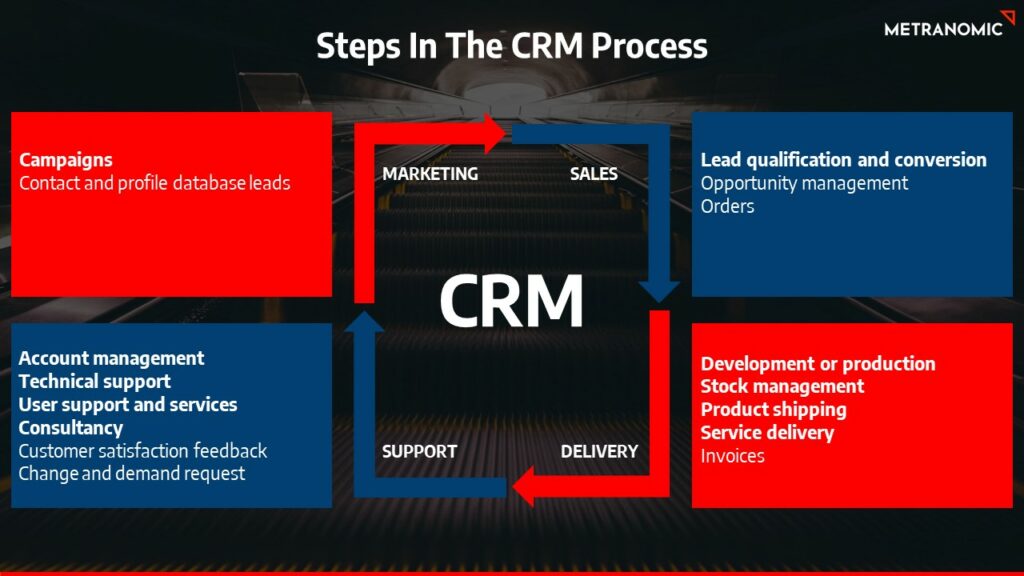
Skyrocket Your Business with CRM: Five Use Cases
Automating Consistent Responses
Effective customer relationship management hinges on ensuring prompt responses to customer queries. Imagine a scenario where a customer emails about a delayed shipment or an incorrect product delivery. You can configure your CRM system to send an automated “We’re addressing your concern” message. This immediate response keeps the customer engaged while your team investigates the issue and provides a more personalised follow-up. This CRM technique ensures customers feel valued and attended to promptly.
Enabling Business Analytics
Data is a vital resource, and tools that convert this data into actionable insights are invaluable. For example, Microsoft Dynamics CRM enables businesses to detect trends that indicate opportunities or potential issues. A successful CRM strategy might involve using Dynamics 365 to analyse customer segments that are experiencing problems with a particular product. Addressing these issues early can prevent them from becoming widespread, demonstrating how proactive CRM strategies can resolve problems before they escalate.
Managing Customer Feedback
Customers appreciate having multiple ways to contact a company. For instance, many Wells Fargo customers prefer reaching out via social media. Wells Fargo utilises CRM to monitor and respond to client inquiries on these platforms, ensuring prompt and effective communication. Additionally, the company employs cloud-based CRM software to deliver excellent customer service and streamline organisational efficiencies. This illustrates how advanced CRM frameworks can enhance customer interactions and operational efficiency.
Tracking Customer Activity
According to CIO magazine, an effective CRM strategy includes tracking customer activity throughout their lifecycle—from initial contact to upselling opportunities with existing clients. By monitoring key behaviours such as social media engagement and email campaign interactions, your business gains valuable insights into customer preferences. This information allows you to tailor your strategies to better meet customer needs, underscoring the significance of detailed CRM examples in improving customer relationships.
Coordinating Between Applications
Enhancing efficiency in customer relationship management can be achieved by integrating your CRM with other applications used for managing customer interactions. This includes syncing with mobile devices, calendars, reporting tools, and email inboxes. For instance, integrating Dynamics 365 with these applications allows seamless data flow, reducing duplicate efforts and improving the customer experience. A well-coordinated CRM system ensures real-time data updates across multiple platforms, exemplifying one of the core CRM techniques for maintaining operational fluidity.
What are the common CRM process pitfalls I should avoid?
In the modern digital age, the importance of an effective customer relationship management (CRM) system cannot be overstated. For most businesses, manually tracking customer interactions is simply unfeasible. Investing in the right CRM product is a crucial first step, but identifying and addressing potential pitfalls early on is key to successful implementation.
Ignoring Data Privacy Regulations: In an era dominated by stringent data privacy regulations, such as the General Data Protection Regulation (GDPR), non-compliance can be costly. Stay informed about the regulations applicable in your jurisdiction and ensure your CRM system is configured to comply with these laws. Be clear about your legal basis for processing customer information, maintain transparent data handling practices, and provide opt-out options to demonstrate your commitment to privacy.
Neglecting Regular Data Backups: Data loss can occur due to hardware failures, human errors, or security breaches. Neglecting regular data backups puts your business at risk. Implement a robust backup strategy to safeguard critical customer information, incorporating both on-site and off-site backups to ensure data redundancy and quick recovery in emergencies.
Inadequate User Training and Adoption: A CRM system without proper user training and support is bound to fail. Ensure your team members receive comprehensive training on how to use the system effectively. Encourage adoption by highlighting the benefits CRM strategies bring to their daily tasks, showing how it can enhance productivity and efficiency.
Using Software That Isn’t User-Friendly: A poor end-user interface can quickly turn your CRM investment into a liability. While many systems boast flashy features, if the interface isn’t straightforward and easy to use, it will likely be abandoned. The system should provide actionable information for your sales or marketing team and be intuitive enough for regular use. Ensuring the CRM is tailored to the specific needs of your business, especially in fostering close customer interactions, is crucial for its utilisation and success.
Our Tactical Recommendations
One of the most actionable CRM strategies involves integrating social channels into your CRM to capture real-time sentiment and engagement, which many clients find to be a game changer. We have also seen how automating CRM workflows—particularly for low-level customer interactions—improves overall response times and satisfaction.Get In Touch
What key features should I look for in a CRM?
As you may have seen, CRM is far more than just software for managing contacts. So, how do you maximise your CRM investment? Here are some example scenarios illustrating effective CRM techniques.
Workflow Automation
Scenario: You manually enter customer data, send welcome emails to every new lead, and log customer interactions.
What CRM can do: CRM software automates these tasks, saving time and increasing efficiency. You can create email templates that are automatically sent when triggered, such as a welcome email for new leads. Additionally, all phone call notes and email interactions can be automatically attached to a contact’s record, keeping your data up to date.
Pro tip: Before automating any task, consult with your staff to understand their workflows. Identify best practices and integrate them into your automated processes.

Lead Scoring
Scenario: You have hundreds of leads at different stages and struggle to prioritise them.
What CRM can do: CRMs allow you to set up scoring guidelines to rank leads based on attributes like geographic location, organisation type, size, and job title. You can also set triggers—such as clicking a link in an email—that change a lead’s status from “cold” to “warm,” indicating they need immediate attention.
Pro tip: Ensure sales and marketing collaborate to define lead scoring guidelines. Only route leads to sales once they meet an agreed-upon scoring threshold.
Reporting and Analysis
Scenario: Your sales reps spend hours creating reports and updating customer records manually.
What CRM can do: Most CRM systems come with ready-to-use reporting templates. Select the report type, enter the date range, and the system generates the required reports in minutes. Customisation options allow you to set dashboard filters, resize reports, and schedule them for specific recipients.
Pro tip: The accuracy of your CRM reports depends on the quality of your data. Ensure your data is accurate and complete.
Integrations
Scenario: You use multiple applications for different processes, making it hard to get a comprehensive view of your operations.
What CRM can do: CRM systems offer built-in integrations with other software, consolidating everything you need in one place. For instance, Salesforce CRM has a click-to-dial feature and an app marketplace for integrations like LinkedIn for lead targeting and Mailchimp for email campaigns. Developer tools are also available for further integrations.
Pro tip: Before integrating systems, remove duplicate and incorrect data to protect the accuracy and integrity of your information.
Customer Feedback
Scenario: You want to understand your customers better to improve products and services, but you’re overwhelmed by disparate feedback tools.
What CRM can do: CRM systems can integrate with standalone customer feedback tools, consolidating all feedback in one place for management, analysis, and visualisation.
Pro tip: When conducting CRM surveys, have clear goals. Keep records current, segment your lists, and ask the right questions to the right people.
